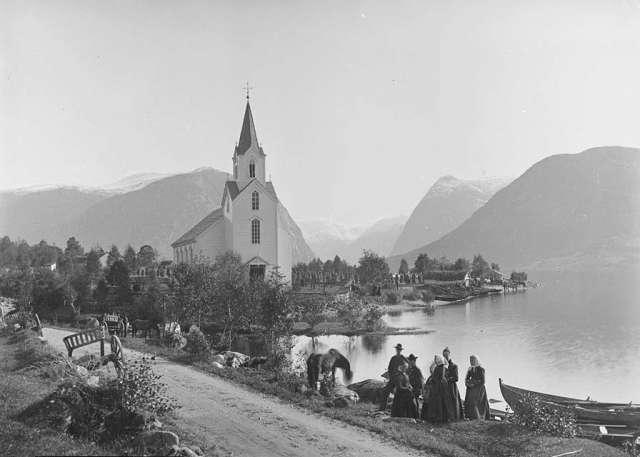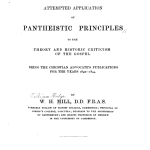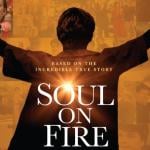
This photo, from the 1880s or 1890s, shows the little church that my grandmother, a life-long Lutheran, attended until she left for America at eighteen (i.e., during this very time). The farm on which she was born and raised, Søgnesand, is at the very end of the Kjøsnesfjord, the area in the distance, enclosed by mountains, at the center of the photograph. They had to travel to the church by boat or sometimes, in the winter, by walking across the iced-over lake. I’ve visited this area several times, and I love it very much. The farm still belongs to relatives of mine. I confess that I look forward to seeing my grandmother again. I barely remember her; she died when I was five. (Photo from Wikimedia Commons)
A curious item from P.M.H. Atwater, The Big Book of Near-Death Experiences: The Ultimate Guide to What Happens When We Die (Charlottesville, VA: Hampton Roads Publishing Company, 2007):
[O]ne woman told me that as she sat next to the bed where her brother lay dying, she began to hear soft melodious music. She looked around to see if a radio was on, and, as she did, a brilliant light filled the room. She turned just in time to see her comatose brother open his eyes, smile, and raise his arms upward. Then, “As real as anything I’ve ever seen, a being of light reached out and took my brother by his wrists and pulled. My brother’s spirit popped right out of his physical body — snap — just like that. I was so surprised, I jumped.” With eyes wide open, she witnessed the being of light and her brother, now in spirit, float out of the hospital room through a mist-like archway that had formed in a nearby ceiling corner. There was a scent of roses around where the discarded body shell lay.
The woman was awestruck for months afterward, unfazed by the fact that she was the only other person in the room. “No matter,” she told me. “What I saw was sacred and holy, and I was privileged to be there. I don’t care who believes me and who doesn’t.” To say this event transformed her life would be an understatement. (48-49)
Now, of course, this woman’s account may be the product of imagination or hallucination. But there are plenty of other stories like it. And she may be lying. But she isn’t named, so she’s gaining neither fame nor notoriety from it and she doesn’t seem to be profiting financially by it.
What interests me on this subject isn’t dependent on whether this or that particular report is true. Some may be false. But not, I think, all of them. It’s impossible for me to believe that every such story is a cynical fabrication or the result of madness. Then, though, we have to ask ourselves exactly what these experiences are, and what they may mean.
***
In further science news:
“Why atheists are not as rational as some like to think”
***
I’ve posted here recently — for example, in “A note on Latter-day Saints and alcohol” — about a new study that finds that the benefits of alcohol consumption are genuinely outweighed by the harms of such consumption.
Here are some additional articles on that topic:
“Do Any Benefits of Alcohol Outweigh the Risks?”
“Is It Better to Drink a Little Alcohol than None at All?”
The two articles above actually appeared before the results of the new study hit the headlines. But this one takes it into account:
“How Much Alcohol Can You Safely Drink? A New Study Disproves The Wine A Day Theory”
And this one is worth a glance, as well:
“These States Consume The Most Alcohol, According To A New Study From The CDC”
And I think that I’ll throw this one in too for good measure, because some in my particular audience will likely find it of interest:
“Does Coffee Affect Cholesterol?”










